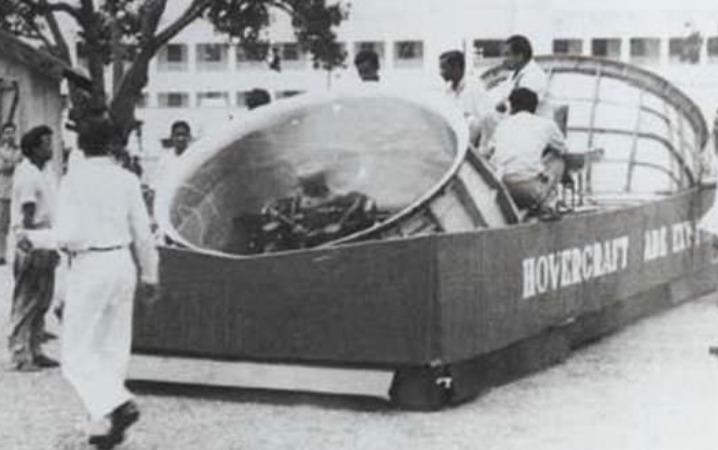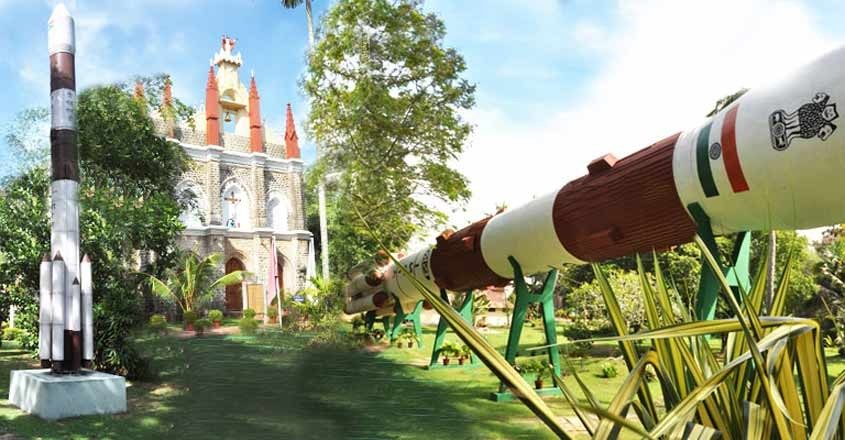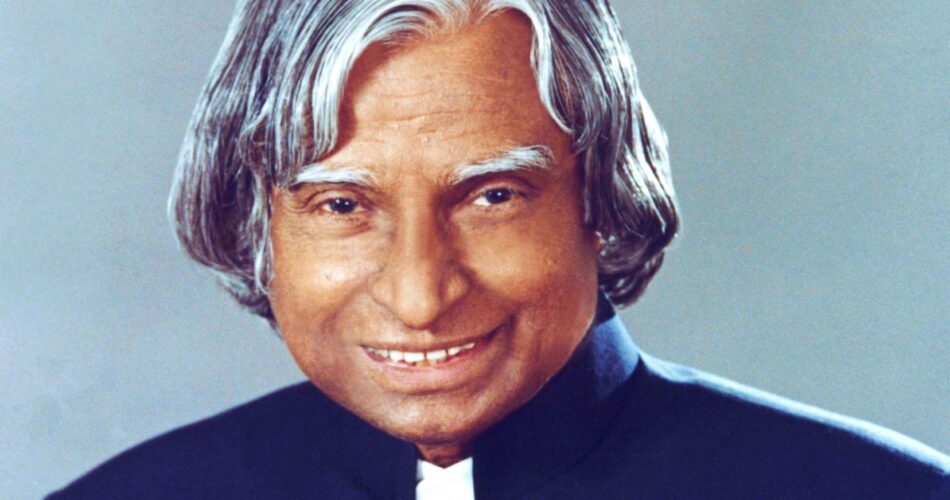In his twenties, a young man harboring dreams of joining the Indian Air Force found himself at the threshold of opportunity. The interview which would place him in Indian Air Force had 8 vacancies to be filled between 25 interviewing candidates. Despite being perspicacious, fate dealt him a blow, leaving him ranked ninth and unable to fulfill his aspirations, perhaps due to his unassuming nature. Disheartened by the setback, he embarked on a soul-searching journey from bustling Delhi to serene Rishikesh.
There, he encountered a sage, Swami Sivananda, who looked like Buddha to the young man. The sage made his prophecy, urging him to accept his destiny and surrender to the divine will, “Become one with yourself, my son! Surrender yourself to the wish of God”. Little did the young man know that indeed God had great plans in store for him.
Eventually, this young man rose above his setbacks to become one of India’s most revered figures—A.P.J. Abdul Kalam. His journey, fraught with challenges, led him from humble beginnings in Rameswaram to the highest echelons of scientific achievement and national leadership.
Early Life:
Abdul Kalam was born to Jainulabdeen and Ashiamma on October 15, 1931, in the small hamlet of Rameswaram. Growing up, the Kalam family faced financial hardships, living hand to mouth. Despite their struggles, Kalam’s father instilled in him a deep sense of spirituality, reading Namaz daily and imparting invaluable lessons from religious texts.
Kalam’s spiritual viewpoint and belief secured the essential values that will allow him to leave a lasting legacy for everyone he met. As Kalam would gone on to say “I feel convinced that there exists a divine power that can lift one up from confusion, misery, melancholy and failure, and guide one to one’s true place.” This belief in the power of divine guidance would also later become a guiding principle in Kalam’s life.
Even in his youth, Abdul exhibited a sense of responsibility and dedication. From waking up early to help his cousin Samsuddin collect newspaper for distribution early morning, selling tamarind seeds to support his family financially, facing communal intolerance in his school because of being a Muslim, Kalam in all sense lived a hard childhood. He narrates one such incident in fifth grade when his teacher attempted to segregate him from his Hindu friend Ramanadha Sastry due to religious differences.
Education:
Upon finishing his primary education, Kalam enrolled at Schwartz High School in Ramanathapuram. As he was preparing to leave Rameswaram, his mother expressed understandable concerns for his son, to which his father responded with poignant words from Khalil Gibran: “Your children are not your children. They are the sons and daughters of Life’s longing for itself. They come through you but not from you. You may give them your love but not your thoughts. For they have their own thoughts.”
At Schwartz High school Kalam found an ideal guide in face of his teacher Iyadurai Solomon who taught him about three mighty forces Desire, Belief, and Expectation. He would teach Kalam to desire intensely what he wants to achieve and be absolutely certain it would happen. “With faith, you can change your destiny,”
From Schwartz High School, Kalam went to St. Joseph’s College, Trichi, to study Intermediate examination. For Kalam, science has always been the path to spiritual enrichment and self-realization.
After graduating from St. Joseph College, Kalam gained admission to the esteemed Madras Institute of Technology. However, the admission fees, of 1000 rupees, posed a financial challenge for his family and his father was not able to pay that fee. To overcome this obstacle, Kalam’s sister Zohara made a significant sacrifice by mortgaging her gold bangles to arrange the necessary funds.
Following his enrollment, Kalam found himself enthralled by the sight of two decommissioned aircrafts at MIT, an experience that ignited a profound fascination within him. This pivotal moment not only inspired him but also propelled him towards the field of aeronautical engineering, marking the beginning of his journey into scientific innovation and groundbreaking discoveries.
Starting Career:
Upon completing his education, Kalam found himself at a crossroads, presented with two distinct opportunities. One was his lifelong dream of joining the Air Force, while the other was a position at the Directorate of Technical Development and Production (DTD&P) within the Ministry of defense. Kalam couldn’t get into Indian Air Force and compulsively joined DTD&P as a Senior Scientific Assistant in Delhi, earning a modest salary of Rs 250/- per month at the age of 27. His journey then led him to the Aeronautical Development Establishment (ADE) in Bangalore, where he would begin his groundbreaking work in aeronautical engineering.
Achievements:
Kalam’s prowess truly came to light at ADE when Dr. OP Mediratta, the Director at ADE, entrusted him with a monumental task: spearheading the development of an indigenous hovercraft prototype—a flying machine but without wings. Despite hovercraft timely completion, the project got cancelled which dealt a crushing blow to Kalam. Yet, as fate would have it, this setback was merely a disguised opportunity.
Seek the truth, and the truth shall set you free.
Pakshi Sastry- the then high priest of Rameswaram temple
One day, as luck would have it, a pivotal demonstration of the hovercraft was scheduled and Kalam was asked to lead the presentation for the unexpected guest who was none other than Prof. MGK Menon, the Director of Tata Institute of Fundamental Research (TIFR). Little did Kalam know that this chance encounter would alter the course of his destiny. Enamored by the brilliance of Kalam after seeing the exhibition of hovercraft, Mr. Menon had an invitation sent from the Indian Committee for Space Research (INCOSPAR), a unit set up by TIFR to do space research in India, offering Kalam a pivotal role as a Rocket Engineer—which proved a gateway for Kalam to the forefront of India’s space endeavor.

INCOSPAR, forged from the talent pool of TIFR, emerging as the driving force behind India’s space research under the leadership of Dr. Vikram Sarabhai.
In 1962, Rocket Launching Station was established at Thumba, signaling the dawn of a new era in India’s space exploration, with Kalam at the helm of groundbreaking initiatives. India launched its maiden rocket, the Nike Apache, made at NASA on November 21, 1963, at Thumba Station marking a triumphant milestone in India’s quest for the stars, accompanied by success of indigenous Rohini Sounding Rocket programme and rocket-assisted take-off(RATO) systems for military aircrafts.
By 1968, INCOSPAR’s evolution into an advisory body under the Indian National Science Academy (INSA) paved the way for the birth of the Indian Space Research Organization (ISRO) under the Department of Atomic Energy (DAE). It was just the start, suggesting the remarkable journey that lay ahead.

Image courtesy: http://spacemuseum.vssc.gov.in...
The SLV-3
For Professor Sarabhai, India to obtain capability in building and launching satellites independently the Satellite Launch Vehicle (SLV) project was a massive requisite and he made the decisive move to pursue this ambitious goal wholeheartedly in 1969. Abdul Kalam took on the role of project leader for the SLV program, working closely with Prof. Sarabhai to turn India’s dream of having its own launch vehicle into a reality. Kalam regarded Prof. Sarabhai as the Gandhiji of Indian science, recognizing his ability to inspire leadership qualities in others through his ideas and example. Tragically, Prof. Sarabhai passed away in 1971, leaving a void in the Indian scientific community. However, work on the SLV continued unabated at the Vikram Sarabhai Space Centre, now under the leadership of new head of ISRO, Prof. Satish Dhawan. In the lead-up to SLV-3, Kalam faced heart-wrenching moments too. In 1975, he mourned the loss of his brother-in-law and mentor, Jenab Ahmed Jallaludin. The following year, his father passed away after battling poor health due to his advanced age. But the loss of his mother the next year filled in him a great regret for not being able to spend more time with his family due to his dedication towards the SLV project. The arduous path towards the development of the Satellite Launch Vehicle (SLV) project was riddled with challenges, yet Kalam’s determination persevered. Finally, on July 18, 1980, India achieved its historic milestone as the inaugural Satellite Launch Vehicle, SLV-3, successfully blasted off into space from SHAR. This momentous achievement was a testament to Kalam’s unwavering determination and dedication.
Journey to becoming “Missile Man”
Post the successful launch of SLV-3 programme, India military rocket program which remained sluggish for years had their eyes on A.P.J Abdul Kalam. The DRDO was in urgent need of leadership to propel its missile programs forward, which had remained stagnant in the initial planning and testing phases. Prof. Raja Ramanna, who was then the Scientific Adviser to the Defence Minister and renowned nuclear scientist asked Kalam to join DRDL and shoulder the responsibility of shaping their Guided Missile Development Programme (GMDP).
Many letters were exchanged between ISRO and DRDO; and meetings were held in the secretariats of the Defence R&D establishment and the Department of Space to precipitate a mutually convenient course of action. Finally after multiple exchange of views Kalam was appointed as Director of DRDL in February, 1982.
Transitioning from ISRO, Kalam assumed leadership and started steering the Integrated Guided Missile Development Programme (IGMDP) which included Surface-to-Surface weapon system, Tactical Core Vehicle, Surface-to-Air area defence system, anti-tank missile project, and Re-entry Experiment Launch Vehicle, Agni. This ambitious endeavor, united over 400 brilliant minds, which aimed to propel India to the forefront of missile technology. Collaborating tirelessly, the program achieved remarkable milestones.
India launched Prithvi(the Surface-to-Surface weapon system) in 1988 and the crowning glory, Agni(REX) on May 22, 1989, following initial launch setbacks on 20th April and 1 May 1989.
Through his visionary leadership and unwavering dedication, Kalam championed the transformative power of technology, empowering India to assert its prowess on the global stage earning himself name of “Missile Man of India”
Kalam speaking from heart:
The biggest problem Indian youth faced, I felt, was a lack of clarity of vision, a lack of direction. It was then that I decided to write about the circumstances and people who made me what I am today; the idea was not merely to pay tribute to some individuals or highlight certain aspects of my life. What I wanted to say was that no one, however poor, underprivileged or small, need feel disheartened about life. Problems are a part of life. Suffering is the essence of success. I will not be presumptuous enough to say that my life can be a role model for anybody; but some poor child living in an obscure place, in an underprivileged social setting may find a little solace in the way my destiny has been shaped. It could perhaps help such children liberate themselves from the bondage of their illusory backwardness and hopelessness. Irrespective of where they are right now, they should be aware that God is with them and when He is with them, who can be against them?
God has not promised
Skies always blue,
Flower-strewn pathways
All our life through;
God has not promised
Sun without rain,
Joy without sorrow,
Peace without pain.
But God has promised
Strength for the day,
Rest for the labor
Light for the way.
Leadership:
APJ’s leadership talks are like a guiding light, illuminating pathways to personal growth and inspiring leadership qualities that resonate deeply with all who hear them.
- I have always been a religious person in the sense that I maintain a working partnership with God. I was aware that the best work required more ability than I possessed and therefore I needed help that only God could give me.
- Anyone who has taken up the responsibility to lead a team can be successful only if he is sufficiently independent, powerful and influential in his own right to become a person to reckon with.
- Total commitment is not just hard work, it is total involvement.
- Flow is a by-product of controlled creativity. The first requirement is to work as hard as you can at something that presents a challenge and is approved by your heart. Another prerequisite for being in flow is the availability of a significant span of uninterrupted time.
- To live only for some unknown future is superficial. It is like climbing a mountain to reach the peak without experiencing its sides. The sides of the mountain sustain life, not the peak.
- Four basic factors that are involved in successful outcomes are: goal-setting, positive thinking, visualizing, and believing.
- Be more dedicated to making solid achievements than in running after swift but synthetic happiness.
- For teams to be successful, the environment must offer scope for innovation.

I was reading some of your content on this website and I believe this internet
site is rattling instructive! Keep on posting.Raise range
Thanks Stephaine P for your love.